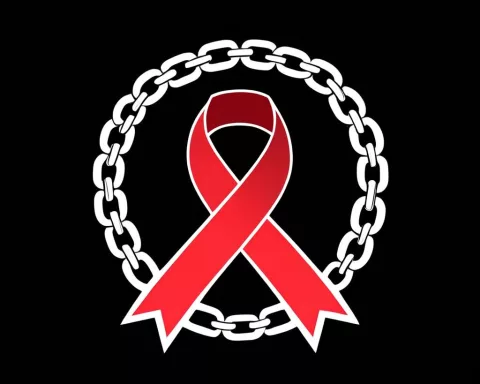South Africa is changing its welfare system by switching from gold cards to black cards, making it more secure and efficient. Beneficiaries need to make this switch by February 28, 2025, to keep receiving their grants without interruption. However, many people, especially those in rural areas, are worried about access to these new cards, as service points are mostly in cities. This change is not just about new cards; it’s about making sure everyone, no matter where they live, gets the support they need. As South Africa moves forward, it must ensure that no one is left behind in this important transition.
What is the significance of South Africa’s transition from gold to black cards in social welfare?
The transition from gold to black cards in South Africa represents a modernization of social welfare systems aimed at enhancing security and efficiency. Beneficiaries must switch by February 28, 2025, ensuring uninterrupted grant access while addressing concerns about inclusivity, particularly for those in rural areas.
A New Chapter in Social Welfare
In the dynamic world of social welfare, the efficient provision of aid to those in need is a testament to a society’s dedication to providing care and equality. South Africa, a nation with a storied history of adversity and achievement, stands at a crucial juncture in its social security evolution. The South African Social Security Agency (SASSA) has recently announced a transformative change: the shift from the well-known gold cards to the innovative Postbank black cards. This transition highlights South Africa’s commitment to updating its systems while addressing the complex realities faced by its varied population.
The urgency of the situation is palpable as SASSA sets a definitive deadline for all grant recipients. Beneficiaries must transition to the Postbank black cards by February 28, 2025, to maintain uninterrupted access to their grants. This deadline marks a pivotal shift towards improving the security and efficiency of grant disbursements by retiring the traditional gold cards. The switch to black cards is more than just a color change; it stands for the integration of cutting-edge technology aimed at safeguarding beneficiaries from the persistent threat of fraud.
This transition is set against a backdrop of challenges and opportunities. While SASSA aims to optimize the delivery of social security, the Western Cape Department of Social Development has raised significant concerns. As the deadline approaches, the department has been flooded with questions and complaints, illustrating the anxiety and uncertainty experienced by many beneficiaries. Monique Mortlock-Malgas from the department pointed out a critical issue: the lack of access to Postbank services in rural regions. Beneficiaries trying to navigate the transition have found that most service points are concentrated in the Cape Town Metro, leaving those in remote areas without feasible options.
Challenges of Access and Inclusion
The obstacles encountered by beneficiaries reflect larger issues within the domain of social security reform. Historically, marginalized communities have often been left to navigate bureaucratic challenges alone. The Western Cape’s difficulty in connecting with Postbank’s customer service highlights the urgent need for a more inclusive strategy. Mortlock-Malgas’s plea for more service points and an extension of the gold card expiry date underscores the necessity for systemic changes that cater to all citizens, regardless of their location.
This situation evokes a broader narrative about technological advancement and its societal impact. For instance, the Industrial Revolution in the Western world marked a turning point, introducing significant societal changes. Similarly, South Africa’s move towards a modernized grant system mirrors the challenge of ensuring that technological progress does not marginalize the most vulnerable. The history of social reform demonstrates that well-intentioned policies often falter in execution due to insufficient infrastructure and foresight. The lessons from these historical experiences are clear: inclusivity must be a priority in any reform effort.
In the realm of art, movements like the Arts and Crafts movement in the late 19th century emphasized the importance of craftsmanship and accessibility. Inspired by figures like William Morris, this movement strove to democratize art and design, making them available to everyone, regardless of social status. Similarly, in social welfare, the challenge lies in developing systems that are not only efficient and secure but also accessible to every citizen.
Ensuring a Truly Inclusive Transition
SASSA’s initiative, though commendable in its intention, must ensure that the transition addresses the diverse needs of South Africa’s population. The stark realities faced by those in rural areas emphasize the need for a multifaceted approach. Accessibility should not solely depend on technological advancements but also on practical solutions, like expanding service points and providing alternative options for those who cannot easily access banking services.
Beyond the immediate logistical challenges, this transition period presents an opportunity for reflection and growth. It highlights the importance of ongoing dialogue between government agencies, financial institutions, and the communities they serve. An inclusive policy implementation approach ensures that the voices of those affected are heard and addressed. By engaging with the lived realities of beneficiaries, SASSA can chart a course that honors the spirit of Ubuntu—a recognition of our shared humanity and interconnectedness.
As South Africa stands at this crossroads, the decisions made in the coming months will shape the future of social security in the nation. The potential for positive change is immense, but it requires a concerted effort from all stakeholders to ensure that no one is left behind. This journey towards a more secure and efficient system is not merely a technical upgrade; it is a reaffirmation of the country’s commitment to social justice and equity.
The Path Forward
Looking ahead, South Africa must balance the benefits of modernization with the need for inclusivity. The transition to Postbank black cards is a step towards a more secure and efficient social welfare system. However, it is crucial to address the concerns raised by the Western Cape Department of Social Development. Ensuring that services are accessible to all, especially in rural areas, should be a top priority.
The challenges faced during this transition period serve as a reminder of the importance of considering the diverse needs of the population. It is essential to adopt a comprehensive approach that includes expanding service points and providing alternative options for those who may face barriers to access. By doing so, South Africa can create a more inclusive and equitable social welfare system that benefits all its citizens.
In conclusion, the transition from gold to black cards is more than just a logistical change; it represents a commitment to modernizing the country’s social security framework. The journey ahead requires collaboration, dialogue, and a steadfast dedication to ensuring that no one is left behind. By embracing these principles, South Africa can pave the way for a brighter and more equitable future for all its citizens.
“`markdown
What is the main reason for South Africa’s transition from gold cards to black cards in social welfare?
The transition from gold to black cards aims to modernize South Africa’s social welfare system by enhancing security and efficiency in grant disbursements. This change is part of the South African Social Security Agency’s (SASSA) commitment to ensuring uninterrupted access to grants for beneficiaries, with a deadline set for February 28, 2025.
Who needs to make the switch to black cards, and by when?
All beneficiaries currently using gold cards must switch to the new Postbank black cards by February 28, 2025. Failing to make this transition by the deadline may result in interruptions to their grant access.
What challenges are faced by beneficiaries regarding the transition to black cards?
One significant challenge is accessibility, particularly for those living in rural areas. Many service points for accessing the new black cards are concentrated in urban locations, primarily the Cape Town Metro, leaving remote communities without feasible options to obtain their new cards. This raises concerns about inclusivity in the transition process.
How is SASSA addressing concerns about access to the new black cards?
SASSA is aware of the challenges and is encouraged to implement a more inclusive strategy, which may include expanding service points in rural areas and exploring alternative options for beneficiaries who cannot easily access banking services. It is crucial for SASSA to engage with affected communities to understand their needs and address their concerns.
What does the transition to black cards signify for South Africa as a whole?
The shift from gold to black cards represents not just a change in the physical card but signifies a broader commitment to modernizing social welfare systems. It is an opportunity for South Africa to enhance security, efficiency, and inclusivity, ensuring that all citizens, regardless of their location, receive the support they need.
What should beneficiaries do if they have questions or need assistance during the transition?
Beneficiaries are encouraged to reach out to SASSA or their local social development offices for assistance and to voice their concerns. It is essential for beneficiaries to stay informed about the transition process, available services, and any updates from SASSA to ensure a smooth switch to the new black cards.
“`












